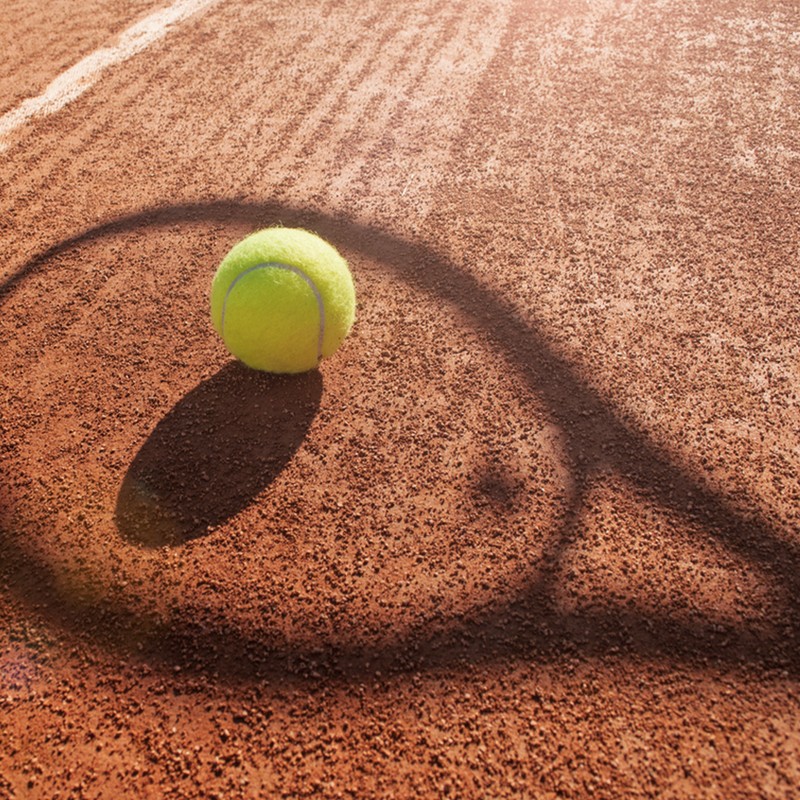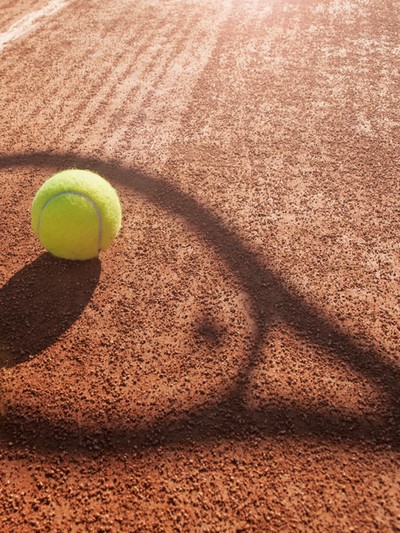

10 Ways To Improve Your Tennis Game
Work On Your Flexibility
“Don’t underestimate the importance of flexibility in your tennis game – this becomes even more important later in life as our flexibility reduces. Never jump straight into a game – you should always take five or ten minutes to warm up. Start by raising the heart rate gradually – either through walking, jogging, or on a bike or rowing machine – and then focus on specific footwork drills that relate to the game. These can be done on the court before you start and will help improve coordination and motor skills. Then, do a few arm swims, walking lunges, side lunges and rotational exercises to aid blood flow and help with balance. Cooling down after your game is just as important. Post-workout, focus on static stretches, holding each for 20-30 seconds to regain the length of the muscles and to support flexibility gains.” – Sarah Hylton, racquets manager at David Lloyd Hatfield
Take Your Serve Back To Basics
“The serve is often regarded as the most important shot in tennis since it marks the start of every point and, if well executed, can dictate how well it goes. However, it’s also one of the most difficult shots to get right, mainly due to the high level of co-ordination required. Go continental and keep your serve simple to start with. If you’re a beginner, hold the racquet in a neutral or continental grip – like a hammer. If you aren’t a beginner, take the time to learn to hit a serve like this. This is the foundation that will take your serve to new heights. Think about your stance – your feet should always be shoulder-width apart with your front foot just behind the baseline and your front hip pointing to the net.” – Patrick Mouratoglou, Slinger ambassador
Build A Stronger Body
“Lots of people think tennis just works the upper body, but it’s an explosive game that requires full-body strength. The strength of your core and lower body is integral to being a good player, especially later in life when muscle strength naturally declines. Most players don’t realise their strokes start from the ground up, so focus on lifting weights and building strength in the lower body – squats and lunges are a good place to start. In an hour of tennis, you’ll use lots of lower body strength – think stopping, starting, jumping and crouching. Developing a strong core will also enable you to be more stable when hitting the ball and will minimise injuries. Yoga and Pilates are fantastic ways to strengthen the core – do more of these and you will see an improvement in your game.” – Nick Poulton, tennis coach and founder of Boof Tennis
Breathe Properly
“Breathing out at the moment of contact can help you transfer your weight as well as hit cleaner shots. Breathing out when you hit the ball is a good cue that shows you are ‘on time’ and ready to hit the ball in a relaxed way, which is key to allow your bodyweight to go through the ball. Tightness keeps things from moving freely. Plus, breathing properly will ensure you don’t tire as quickly.” – Patrick
Adjust Your Racket
“The world of rackets can be overwhelming but choosing the right one can be the difference between a good game and one that feels difficult and painful. Look for a lightweight racket and consider a softer string. Grip size is also important, as the wrong size can promote an injury. Consider getting a new overgrip so your grip doesn’t slip, and make sure it’s changed regularly. If you’re in any doubt, chat to your local tennis professional – they’ll be able to advise you on the right racket for you and grip sizes. If you’re investing in a racket, try before you buy – there are various companies online that offer trials so you can get a feel for the weight and balance of a racket before you buy.” – Sarah
Perfect Your Footwork
“A lack of footwork is one of the most common pitfalls women make when playing tennis. The key to footwork is to keep the legs pumping so you can react quickly. As the ball flies your way across the net, make lots of smaller steps on your approach, as opposed to running into it and then being too close to the ball to accurately take your shot. Footwork and position on court is everything in tennis.” – Laura Ward, founder of Exeat Weekend
Book A Private Session
“It’s never too late to improve your game – it all comes down to being open to learning or re-learning new motor skills. Having a couple of private lessons with a coach can be a game-changer – you can then take this learning into your social practice sessions to support game development. Also consider finding a partner to hit with on a regular basis – this can be a great way to put your new learnings into practice and make them a habit. Another good tip is to watch tennis live on TV or watch your favourite players on YouTube – notice their decision making and how they hit the ball.” – Sarah
Get Involved In A Tournament
“Playing alongside others is a fantastic way to improve your technique and learn new skills. Most clubs host tennis events for senior women as well as box leagues, which can be both singles and doubles. The club annual championships is also a great way to play in a few different events at your level. The LTA also runs events at varying levels – have a look online for details and to get involved.” – Sarah
Don’t Ignore Tennis Elbow
“Tennis elbow – a degenerative condition of the tendons that causes pain on the outside of the elbow – is surprisingly common. In fact, according to the International Tennis Federation, 50% of all players will suffer from tennis elbow during their career, with players over the age of 35 particularly at risk. The most common symptoms include pain that travels down the forearm when lifting or bending your arm, or when gripping small objects like a pen. If your pain doesn’t go away after a few days of rest, visit your GP. They’ll check for swelling and tenderness and may refer you to a specialist. Tennis elbow typically improves with treatment and heals fully within six months to two years. One of the most important things to do is to rest the affected arm and stop any exercise that could aggravate it further. To avoid tennis elbow, keep your arms flexible and strong, and try to keep the wrist in a neutral position when taking a shot. Always warm up before playing tennis and consider a lightweight racket, making sure the string tension isn’t too high.” – Carlos Cobiella, consultant shoulder & elbow sports surgeon at The Shoulder Practice
Think Quality Over Quantity
“One focused hour of training is far more efficient – and effective – than three unfocused ones. Try to show up with a sense of purpose. This is important when you step onto a court. Always have a clear goal before each training session and give it your best, however little time you have. Also, remember to not be too hard on yourself. One of the appealing things about tennis is that it isn’t easy. Sometimes we love this challenge, but tennis does not love you back. Don’t beat yourself up – stubborn perfectionism is the quickest road to frustration. The brain and body work best when they are relaxed.” – Patrick
For more from the experts visit DavidLloyd.co.uk, SlingerBag.com, BoofTennis.co.uk, ExeatWeekend.com and TheShoulderPractice.com
DISCLAIMER: We endeavour to always credit the correct original source of every image we use. If you think a credit may be incorrect, please contact us at info@sheerluxe.com.

